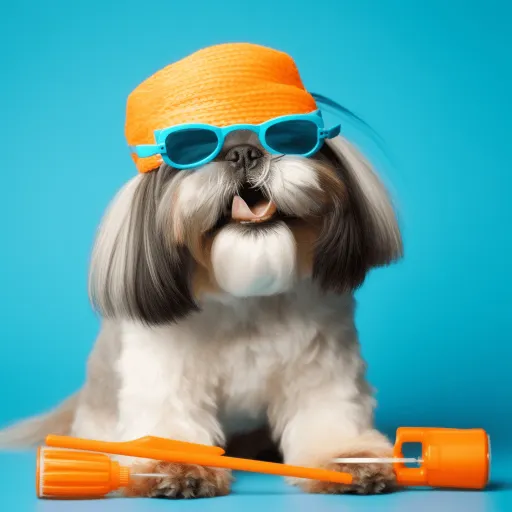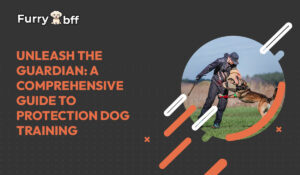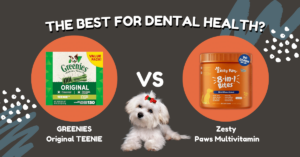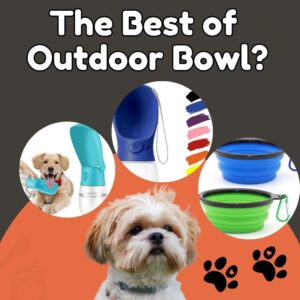Hypoallergenic dogs are a popular choice among allergy sufferers because they produce less dander, which is the main allergen that triggers allergic reactions.
However, it’s important to note that no dog is completely hypoallergenic, and each individual’s sensitivity to allergens can vary. Regular grooming is essential for maintaining the coat and skin health of hypoallergenic dogs, as well as reducing the amount of dander they produce. In this blog post, we’ll discuss the best grooming practices, hypoallergenic dog shampoos and products, dealing with specific grooming challenges, and grooming tools and techniques for hypoallergenic dogs.
Let’s Talk Grooming Practices
When it comes to grooming hypoallergenic dogs, brushing is a crucial practice for maintaining the health of their coat and skin. Regular brushing helps prevent matting and tangling, which can be uncomfortable for these dogs and potentially lead to skin issues. The frequency of brushing depends on the specific coat type of the hypoallergenic dog breed, but one thing is for sure – brushing should not be taken lightly!
Choosing the right brush or comb for your hypoallergenic dog is key to effective grooming. With various coat types, such as curly, wiry, silky, or straight, different brushes or combs may be required. For instance, a slicker brush or a comb with wider teeth may be needed for curly or wiry coats, while a pin brush or a comb with narrower teeth could work wonders for silky or straight coats. Seeking guidance from a professional groomer or your veterinarian is highly recommended to ensure you have the right grooming tools for your dog’s unique coat type.
Beyond brushing, regular bathing and trimming are also important aspects of grooming hypoallergenic dogs. The frequency of bathing depends on the breed and the individual dog’s needs, but maintaining a bathing schedule of every 4-6 weeks is a general rule of thumb. When it comes to bath time, using a hypoallergenic and gentle dog shampoo that is specifically formulated for dogs with sensitive skin is of utmost importance. Harsh or fragrant shampoos could potentially irritate the skin of your hypoallergenic dog, so choose your products wisely!
Trimming is another essential grooming practice for hypoallergenic dogs. Regular trimming helps maintain the length and shape of the coat, prevents matting, and keeps the dog comfortable. Trimming may involve clipping the hair around the ears, paws, and sanitary areas, as well as shaping the overall coat. Seeking advice from a professional groomer for proper trimming techniques and using the appropriate tools for your hypoallergenic dog’s coat is highly recommended for optimal results.
Hypoallergenic Dog Shampoos and Products: A Must-Have!
When it comes to grooming hypoallergenic dogs, using hypoallergenic and gentle dog grooming products is a non-negotiable. Harsh or fragrant grooming products could potentially cause skin irritation and allergies in these sensitive dogs. When selecting grooming products for your hypoallergenic dog, look for products that are specifically labeled as hypoallergenic or formulated for dogs with sensitive skin. These products are typically free from harsh chemicals, fragrances, and dyes, and are designed to be gentle on the skin.
Here are some top recommendations for hypoallergenic dog shampoos, conditioners, and other grooming products:
- Earthbath Hypo-Allergenic Dog Shampoo: This natural shampoo is free from parabens, sulfates, and artificial fragrances. It soothes dry and itchy skin, providing gentle care for your hypoallergenic dog.
- Burt’s Bees for Dogs Burt’s Bees for Dogs Hypoallergenic Shampoo: This shampoo is made with natural ingredients and is pH balanced for dogs. It is free from fragrances, sulfates, and other harsh chemicals, making it gentle for dogs with sensitive skin.
- Veterinary Formula Clinical Care Hypoallergenic Shampoo: This shampoo is specifically formulated for dogs with allergies and sensitive skin. It is free from parabens, dyes, and fragrances, and helps soothe and moisturize the skin while cleaning the coat.
- Espree Hypo-Allergenic Shampoo: This shampoo is made with natural and organic ingredients and is pH balanced for dogs. It is free from fragrances, sulfates, and other harsh chemicals, making it ideal for hypoallergenic dogs.
- Hypoallergenic Dog Wipes: These wipes are designed for quick touch-ups and in-between baths. Look for wipes that are specifically formulated for dogs with sensitive skin and are free from fragrances and harsh chemicals
Dealing with Specific Grooming Challenges
Grooming hypoallergenic dogs can come with some unique challenges. Here are some tips for dealing with specific grooming challenges:
- Matting and Tangling: Regular brushing is key to prevent matting and tangling in hypoallergenic dogs’ coats. Use a brush or comb that is suitable for your dog’s coat type, and be sure to brush all the way down to the skin to remove any loose hair.
- Eye Stains: Some hypoallergenic dogs are prone to tear stains around their eyes. To prevent or minimize eye stains, keep the area around the eyes clean and dry, and consider using a tear stain remover specifically formulated for dogs.
- Ear Care: Hypoallergenic dogs with long or floppy ears may be prone to ear infections. Clean their ears regularly and keep them dry to prevent moisture buildup, which can lead to infections. Use an ear cleaner specifically formulated for dogs, and be gentle when cleaning the ears to avoid causing any discomfort.
- Nail Trimming: Regular nail trimming is important for all dogs, including hypoallergenic dogs. Use dog-specific nail clippers and trim the nails regularly to prevent them from becoming overgrown and causing discomfort.
Essential Grooming Tools and Techniques
Having the right grooming tools and using proper techniques are essential for effective grooming of hypoallergenic dogs. Here are some essential grooming tools and techniques:
- Brush or Comb: Choose a brush or comb that is suitable for your dog’s coat type. Slicker brushes, pin brushes, and combs with different tooth widths are commonly used for hypoallergenic dogs, depending on their coat type.
- Scissors or Clippers: Scissors or clippers may be needed for trimming the coat, especially around the ears, paws, and sanitary areas. Use scissors or clippers that are designed for dogs, and be careful not to cut the skin.
- Hypoallergenic Dog Shampoo: Use a hypoallergenic and gentle dog shampoo that is specifically formulated for dogs with sensitive skin. Avoid using harsh or fragrant shampoos that could potentially irritate the skin of your hypoallergenic dog.
- Towels or Blow Dryer: Towels or a blow dryer can be used to dry your dog’s coat after bathing. Use a towel or a blow dryer on a low heat setting, and be sure to thoroughly dry the coat to prevent moisture buildup.
- Nail Clippers: Use dog-specific nail clippers to trim your dog’s nails regularly. Be careful not to cut the quick, which is the blood vessel inside the nail, as it can cause
- pain and bleeding. If you’re unsure about how to trim your dog’s nails, seek guidance from a professional groomer or veterinarian.
- Ear Cleaner: Use a dog-specific ear cleaner and cotton balls or pads to clean your dog’s ears regularly. Be gentle and avoid inserting anything into the ear canal to prevent injury.
- Eye Stain Remover: If your hypoallergenic dog is prone to tear stains, use a dog-specific eye stain remover to keep the area around their eyes clean and free from stains.
- Grooming Table or Non-Slip Surface: Having a grooming table or a non-slip surface, such as a rubber mat, can provide stability and safety during grooming. It can prevent your dog from slipping or moving around too much, making the grooming process easier and safer.
- Positive Reinforcement: Use positive reinforcement techniques, such as treats, praise, and rewards, during grooming sessions to make it a positive experience for your hypoallergenic dog. This can help build trust and cooperation, making future grooming sessions easier and more enjoyable for both you and your dog.
- Regular Grooming Schedule: Establish a regular grooming schedule for your hypoallergenic dog based on their coat type, activity level, and individual needs. Regular grooming can help prevent matting, tangling, and other issues, and promote a healthy coat and skin.
- In conclusion, grooming hypoallergenic dogs requires special care and attention due to their sensitive skin and unique coat types. By using hypoallergenic grooming products, dealing with specific grooming challenges, and using essential grooming tools and techniques, you can keep your hypoallergenic dog’s coat clean, healthy, and free from irritations. Remember to always consult with your veterinarian or a professional groomer if you have any concerns or questions about grooming your hypoallergenic dog.









